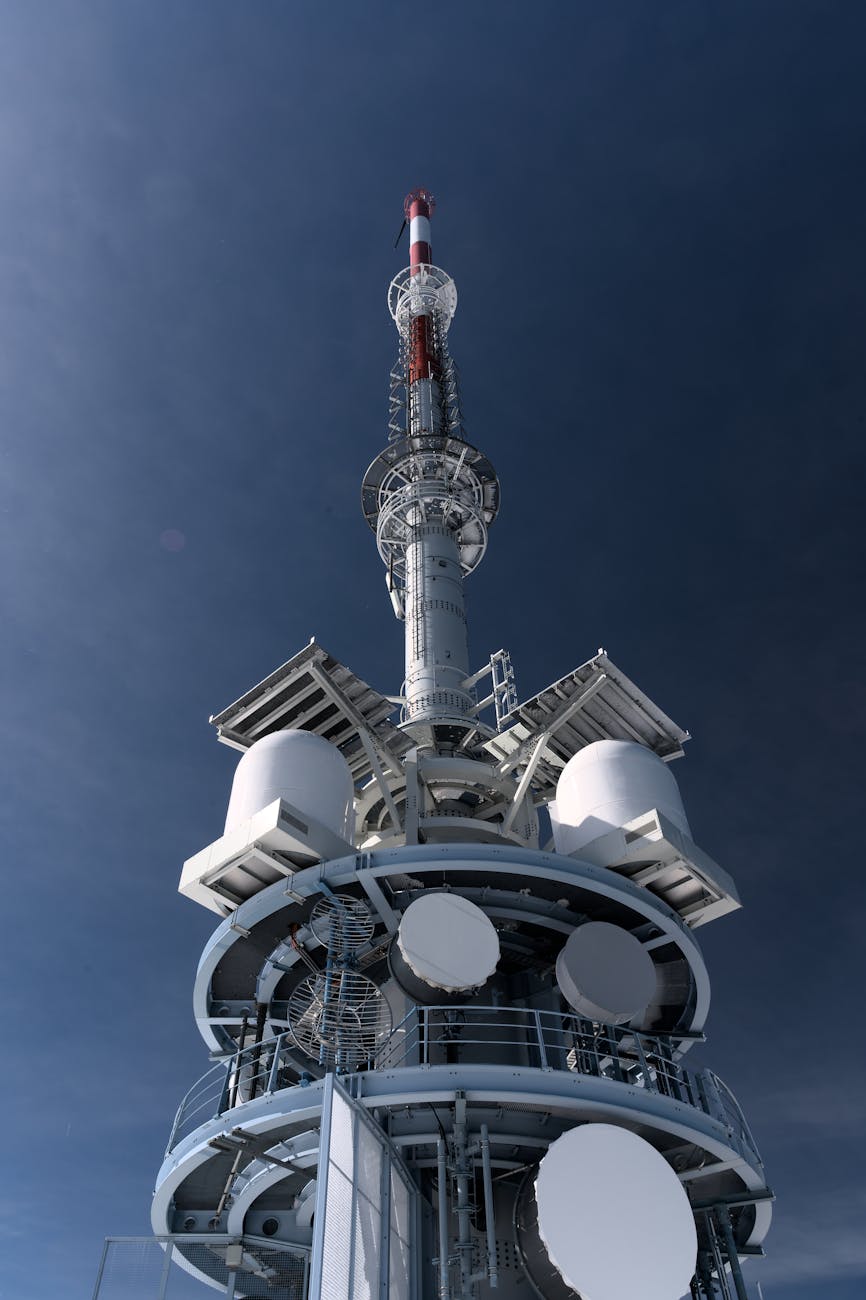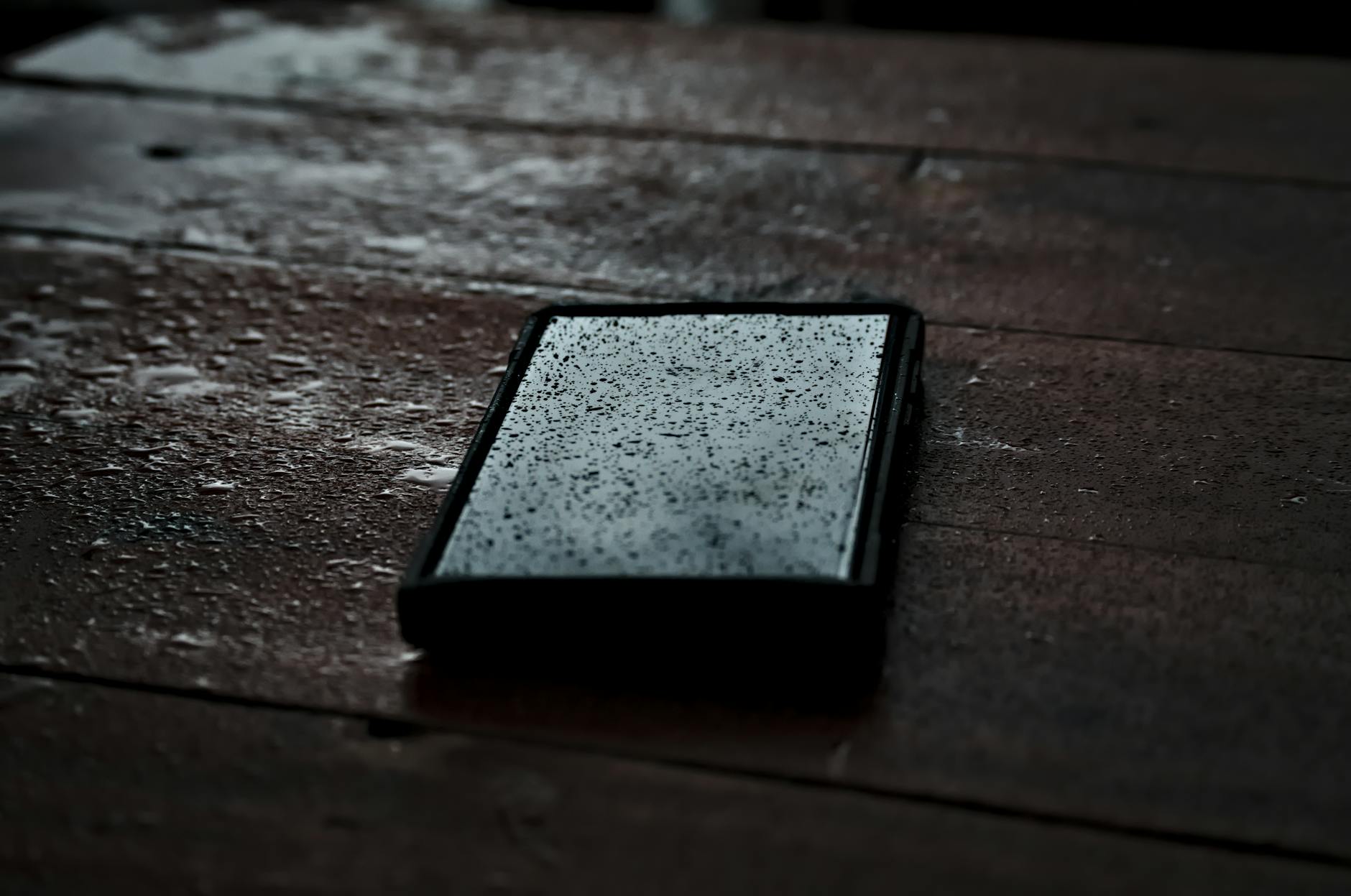Pros and Cons of Microwave Transmission
Microwave Transmission Overview
Microwave transmission is an absolute rock star when it comes to telecommunications, dishing out speedy data delivery over miles and miles. Getting the hang of the basics, plus the frequency and wavelength stuff, opens a whole world of understanding about its perks and quirks.
Basics of Microwave Transmission
Think of microwave transmission as wireless wizardry for moving data around. The signals are like super straight arrows needing a direct line between the “send” and “catch” antennas. It’s a go-to option for long-distance chats, like city-to-city calls, satellite links or buzzing mobile networks.
| Key Feature | Description |
|---|---|
| Transmission Medium | Microwave signals |
| Typical Uses | Long-distance communication, satellite links, mobile networks |
| Signal Path | Line-of-sight required |
You’ve got two main players: terrestrial and satellite links. Terrestrial microwaves make it happen on land with transmitters and catchers, while satellites hang out in space, bouncing signals around.
Frequency Range and Wavelengths
Microwave magic happens in a frequency sweet spot from 300 MHz to 300 GHz, matching wavelengths from tiny 1 mm up to 30 cm long. This frequency and wavelength duo affects how signals behave and what jobs they can do. (Spoiler alert: it’s kinda important.)
| Frequency Range | Wavelength Range |
|---|---|
| 300 MHz – 300 GHz | 1 mm – 30 cm |
We’ve got different slices of this microwave pie for different gigs. Lower frequencies hit it big in mobile communication, while higher frequencies love hanging out with satellites or radars. Knowing how these signals work helps cook up efficient ways to keep people connected. Check out our chats about 5G vs Microwave Tech and the Financials of Using Fiber Optics for the whole scoop.
Advantages of Microwave Transmission
Here’s why microwave transmission is a big deal when it comes to getting us all connected across the globe.
Lightning-Fast Data Zipping
You know what’s cool about microwaves? Not just popping popcorn but shooting data fast over long stretches. These bad boys operate from 300 MHz to 300 GHz, packing a punch with tiny waves from 1mm to 30cm (GeeksforGeeks). This high frequency lets them sling data quickly and smoothly, with almost no drop in quality.
| Frequency Range | Wavelength |
|---|---|
| 300 MHz – 300 GHz | 1 mm – 30 cm |
Microwave signals do wonders for direct communication even when setting up those pesky fiber optic cables is too pricey or just plain impossible. They’re like the express lane on highways—super efficient for bulk data transfer between major spots in a network. Take a peek at our smackdown between fiber optics and other transmission methods over at technological comparison of fiber optics and 5G transmission.
Chatting Over the Horizon
Imagine talking to someone you can’t even see—microwave transmission nails that! Through a neat trick called tropospheric scatter, these waves bounce off the atmosphere, kinda like skipping stones, to bridge the gap where you can’t literally see the other side (GeeksforGeeks). Whether it’s rough terrains or endless seas, these signals don’t back down.
Think about military teams, folks surveying remote lands, or rescuing people during disasters—they all rely on microwaves to keep talking. It’s a trusty option when things on the ground get hairy.
Want a peek into the financial side of telecom tech? Check out our cost-benefit analysis of fiber optics in telecommunications.
Microwave transmission stands out with these zippy data deliveries and horizon-beating powers. Weigh up these perks and remember to balance them against the drawbacks so you can choose the right tool for your telecom tasks.
Disadvantages of Microwave Transmission
Microwave transmission is known for zippy data speeds and long-range communication but isn’t without its quirks that can trip you up. This bit digs into why it’s not always everyone’s first pick.
High Cost Limitation
Starting with the elephant in the room—money. Getting a microwave transmission set-up isn’t exactly cheap. Think of it as the Bentley of data transmission. You need to build a web of microwave towers, each relying on repeaters, making it a fancy but costly affair. This hefty bill keeps it from being the go-to choice for many who’d rather save a pretty penny.
When breaking down the costs, it looks something like this:
- Initial setup cost: Putting up those towering giants and gadgets
- Maintenance cost: The regular check-up heebie-jeebies
- Operational cost: Keeping the lights and experts on
| Cost Component | Estimated Cost (USD) |
|---|---|
| Initial Setup | $100,000 – $500,000 each tower |
| Maintenance | $10,000 – $20,000 a year, per tower |
| Operational | $5,000 – $10,000 a year, per tower |
This cash flow crunch often nudges folks towards more pocket-friendly alternatives like fiber optics. Get more insights with our cost-benefit analysis of fiber optics in telecommunications.
Specialized Roles
Now, onto its niche charm. Microwave transmission demands a clear line-of-sight, meaning you need giant towers or something equally tall to make it all work. It’s like those folks who need their phone six feet away to get a decent signal—both amusing and tricky (GeeksforGeeks).
Weather also has its hang-ups here. Rain, fog, or any atmospheric tantrum can mess with the signal, leaving you hanging when you want things smooth.
| Factor | Impact |
|---|---|
| Weather Conditions | Messes up signals |
| Line-of-Sight Requirement | Need really tall things |
| Path Interference | Reliability gets shaky |
These hitches mean microwave systems often pop up where their speedy and far-reaching perks overrule the downsides—think remote spots or wild terrains where laying cables or making space systems isn’t a piece of cake.
For a deep dive into modern options, such as 5G and fiber optics, you’ll get a better grip on the tech playground as it evolves. Knowing each method’s ups and downs arms you with smarter choices tailored to your situation and backdrop.
Components of Microwave Systems
Graspin’ the bits and pieces of microwave transmission systems is your ticket to gettin’ what makes ’em tick and how they trip up sometimes. This part scopes out the heavyweights: repeater networks, antennas, and path reliability.
Repeater Networks
Microwave systems often lean on repeater networks to juice up signals and stretch how far they can reach. Think of ’em as the calling cards of long-distance communication. These repeaters get signals, give ’em a boost, and toss ’em back out for more traveling (GeeksforGeeks).
Back in the day, like when AT&T was stringing together the country with the Long Lines network, these repeater systems were the backbone for analog signals traipsin’ across miles. They used horn antennas, tough as nails, to keep signals strong in gnarly weather (99% Invisible).
Antenna Types
The whole shebang of a microwave transmission’s zing depends a lot on the antenna. The main stars here are parabolic dish antennas and horn antennas.
- Parabolic Dish Antennas: These gadgets zero in on radio waves, like a magnifying glass for sound, sending and catchin’ signals with pinpoint accuracy.
- Horn Antennas: These are the unsung heroes with wide bandwidth and top-notch aim, mighty handy for relay networks, and are strong enough to beam signals across landscapes.
Here’s a quick showdown on what these antennas offer:
| Antenna Type | Key Features |
|---|---|
| Parabolic Dish | Squeezes waves into a pinpoint beam, superb for precise signal delivery |
| Horn Antenna | Sturdy with wide bandwidth, can handle rugged conditions like a champ |
Path Reliability
Path reliability ain’t a joke in the microwave club; it’s about makin’ sure those signals don’t go poof. A reliable connection means the messages get through, rain or shine, no cuttin’ corners. What messes with path reliability?
- The ever-fickle weather
- Trees, hills, and whatnot
- Too many gadgets playing in the same space
Good systems plan ahead, fightin’ off path loss to keep connections on their toes. Engineers gotta scout and tweak repeater and antenna placements to keep things ship-shape.
If buzzin’ tech talk’s your thing, check out how microwave stuff stacks up against other cool toys like 5G tech and peep the cost talk on fiber optics.
Understanding these blocks lets ya peek into how microwave systems pull their weight and then some. For even more dish on their past life and hip new uses, have a gander at our other pages.
Applications of Microwave Signals
Microwave signals are like the unsung heroes behind many telecommunication marvels. Let’s dive into two standout uses where microwaves really shine.
Line of Sight Requirement
Turns out, microwaves are a bit picky. They need a clear Line of Sight (LOS) to do their job—zipping messages across great distances without a hitch. It’s like playing catch with a friend: if you can’t see each other, good luck with that throw!
| Application | What’s Going On |
|---|---|
| Terrestrial Microwave | Uses microwaves to chat over long haul on land (UMSL) |
| Broadcast Satellites | Beams TV and radio shows straight to your living room (99% Invisible) |
| Wireless Networks | Many networks need this clear sight for the microwave vibes |
The LOS requirement not only makes connections smoother but also keeps the signal zipping fast, crucial when the show must go on without interruptions. Wanna peek deeper into tech rivalries? Check out fiber optics and 5g transmission.
Wireless Power Transmission
Now here’s a twist—microwaves aren’t just blabbing signals; they’re also moving power without cables! Imagine sending electricity through the air with microwaves over long stretches. Talk about wireless!
| Application | It’s All About This |
|---|---|
| Space-based Solar | Grabs sunlight out in space and beams it down to Earth with microwaves |
| Consumer Electronics | Say goodbye to tangled cords, powering gadgets wire-free! |
This tech could light up remote spots, changing the energy game entirely. Fancy some number crunching on whether fiber optics is worth the buck? See cost-benefit analysis of fiber optics in telecom.
Microwave use in these areas shows just how flexible and mighty these signals are in telecommunication today. By getting a grip on the LOS thing and tapping into wireless power tricks, we’re unlocking all the goodies microwave tech holds for us on this planet and beyond.
Historical Perspective: AT&T Long Lines
Establishment and Functioning
Back in the early ’50s, the AT&T Long Lines microwave tower network kicked off a major shift in communication across the U.S. This system stretched coast to coast, using a zig-zag setup to dodge signal clashes like it was the comms equivalent of a ballroom dance. This network wasn’t just busy with phone calls—it carried TV signals and other data through some pretty wild times, like the Kennedy assassination and when Nixon decided to peace out.
These towers weren’t playin’ around; they relied on good ol’ analog tech, sending signals from tower to tower. They were like giant relay races, with the baton being SUV-sized horn antennas spread 30 to 40 miles apart. And those bad boys were built to take a punch, ready to ride out the shockwaves of a nuclear explosion if it came to that.
Key Characteristics of AT&T Long Lines:
| Feature | Detail |
|---|---|
| Network Span | Coast to coast |
| Spacing | 30 to 40 miles apart |
| Antenna Type | SUV-sized horn antennas |
| Signal Capacity | Boosted by radio wave polarization |
The horn antennas could handle tough conditions, making this network not just vast but also tough as nails during a dicey era.
Transition to Fiber Optics
Roll into the late ’80s and 90s, and fiber optics came along and stole the show from the microwave setup. This wasn’t just an upgrade—it was like moving from a tricycle to a jet. Fiber optics packed a punch when it came to hauling data. Just two strands of glass could handle thousands of times the traffic the old towers could manage, and these fibers zipped data along faster and cleaner, laughing in the face of signal loss and interference.
Comparison of Microwave and Fiber Optics:
| Feature | Microwave Transmission | Fiber Optics |
|---|---|---|
| Signal Capacity | Cramped by RF channels | Thousands of times higher |
| Distance | 30 to 40 miles between relays | Much farther without boosters |
| Interference | Prone to electromagnetic hassle | No sweat with interference |
| Bandwidth | On the low side | Off the charts |
Today’s world of fiber optics and 5G has left these towers in the dust, though a few stand tall as emergency fallbacks or have been swanked up into urban decor. With tech charging forward, folks are hashing out how fiber, microwaves, space, and 5G will shape how we all stay linked up.
Privacy and Security Concerns in Telehealth Systems
Telehealth has taken off, letting folks get healthcare right from their couch. But with all those perks come some really big worries about keeping people’s info secure and private.
Data Breach Impact
A data breach in telehealth can spell disaster. The average cost of a data breach in the U.S. tends to hover around $8 million, messing up the lives of roughly 25,575 users per breach (Imperva). We’re talking about losing the trust of patients and harming the reputation of healthcare businesses.
| Impact | Average Cost (USD) |
|---|---|
| Data Breach | $8 million |
| User Accounts Affected | 25,575 |
If a telehealth system gets hacked, a treasure trove of private patient info could get out in the wild. This means medical histories, ID details, and other stuff you’d rather keep between you and your doctor could be exposed. It’s not just the patients’ privacy that’s on the line – healthcare providers might find themselves facing legal action too.
Rising Threats and Vulnerabilities
The switch to telehealth has attracted more sophisticated cybercriminals. We’re looking at tricks like social engineering, ransomware demands, and intricate attacks known as advanced persistent threats (APTs)—all of which can wreak havoc (Imperva).
| Threat | Description |
|---|---|
| Social Engineering | Tricking people to spill the beans on sensitive info |
| Ransomware | Nasty code that locks up your data till you pay a ransom |
| Advanced Persistent Threats (APTs) | Long-term targeted assaults to steal sensitive data |
Also lurking are vulnerabilities from sloppy coding practices, letting attackers mess with database queries through SQL injections. This opens the door to sensitive info, all without a welcome mat (Imperva).
On top of all this, privacy mess-ups happen because of poor control over what info gets collected, used, and shared. Personal stuff, like substance use records or what’s going on at home, could be mishandled and land in the wrong hands. Plus, there are security threats: hackers could grab data during collection, sharing, or storage, with dodgy apps and devices ready to be exploited (Journal of Ethics – AMA).
Dealing with these issues means using tough security like data encryption, running security checks, and keeping complete data backups. Staying on top of new threats and tweaking security plans are critical to safeguard patient info.
Grasping these privacy and security headaches is critical when thinking about microwave transmission upsides and downsides in telecommunication. For more deep dives on tech, check out our pieces comparing fiber optics and 5G transmission and the cost-benefit tally of fiber optics in telecommunications.
Recommendations and Benefits
Comprehensive Regulatory Approach
To tackle concerns about privacy and security in telehealth systems, we need a more thorough set of rules. Existing regulations like HIPAA and the FDA guidelines don’t quite cover everything in the complex world of consumer devices and apps used in telehealth (Journal of Ethics – AMA).
Experts Hall and McGraw propose that the Federal Trade Commission (FTC) step in to create and enforce solid privacy and security rules for telehealth. Their recommendations include:
- Developing voluntary guidelines for telehealth providers to follow.
- Offering legal protections to those who adhere to these guidelines.
With these steps, telehealth systems could win more trust and become more popular, lessening the worries over privacy breaches and security lapses.
Balancing Privacy Risks with Health Benefits
Sure, privacy and security worries exist, but let’s face it—the perks of telehealth often tip the scales for many folks, especially those dealing with chronic illnesses. Many patients are ready to gamble a bit on privacy because they see real benefits, such as ease and better communication with their healthcare folks (Journal of Ethics – AMA).
To make the most of these perks while keeping risks in check, doctors and telehealth services can:
- Seamlessly weave telehealth into their everyday routines.
- Openly discuss privacy and security concerns with patients.
- Keep themselves updated on the latest in privacy and security protocols.
In 2019, the Ponemon Institute reported that data breaches in the U.S. cost an average of $8 million per incident, impacting around 25,575 user accounts each time, which can seriously hurt customer trust and reputation (Imperva). So, a smartly balanced act is crucial for the success of telehealth services.
Curious about different telecom tech? Check out our articles on 5G vs microwave technology comparison and cost-benefit analysis of fiber optics in telecommunications.













